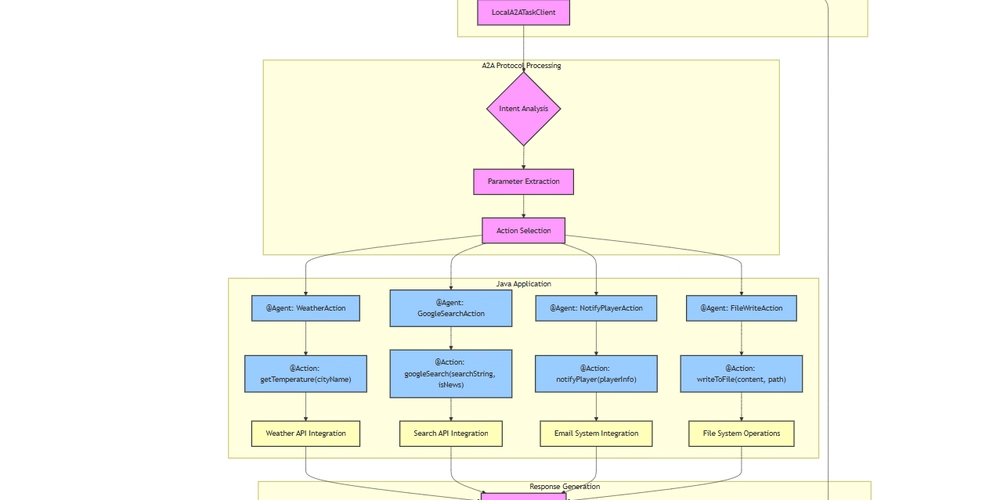How to Use Arrow Functions in PHP 7.4+
Arrow functions were introduced in PHP 7.4 to allow devs to write short, anonymous functions. They offer a compact alternative to traditional closures, especially when the function body is small and focused. In this article, you will learn how to use...

Arrow functions were introduced in PHP 7.4 to allow devs to write short, anonymous functions. They offer a compact alternative to traditional closures, especially when the function body is small and focused.
In this article, you will learn how to use the arrow function in PHP with examples. You’ll also learn about the difference between arrow functions and anonymous functions.
Table of Contents
Prerequisites
You should know how to write basic PHP code, such as functions, and be able to work with arrays. Make sure you’re using PHP 7.4 or newer because arrow functions only work in that version and above.
Understanding Arrow Functions in PHP
The PHP arrow function is a shorthand syntax. It defines an anonymous function and is designed for simple operations and expressions.
Arrow functions in PHP are best used when:
You need a quick callback or inline function.
The function returns a single expression.
You want to avoid repetitive
usestatements.
The basic syntax of an arrow function is:
fn(parameter_list) => expression;
fnis the keyword that defines the arrow function.parameter_listis the list of parameters (similar to a normal function).=>separates the parameter list from the expression.expressionis the value the function returns. You cannot use a block of statements here – only a single expression is allowed.
Arrow functions automatically capture variables from the scope. They don’t need the use keyword as shown below:
$var_name = 10;
$func = function($n) use ( $var_name ) {
return $n * $var_name;
}
You can use the variables in the scope directly:
$var_name = 10;
$func = fn($n) => $n * $var_name;
Here’s a lexical scoping example:
$multiplier = 3;
$multiply = fn($x) => $x * $multiplier;
echo $multiply(4); // Outputs: 12
The variable $multiplier is automatically captured from the outer scope. You don’t need to use use($multiplier) as you would in a traditional anonymous function.
Key rules of arrow function syntax:
Always use
fn, notfunction.No curly braces or
returnkeyword – just a single expression.Automatic variable capture from the outer scope.
It cannot contain multiple statements or control structures (like
if,foreach, and so on).
Let’s move on to the following section to take a look at the difference between arrow functions and anonymous functions in PHP.
The Difference Between Arrow Functions and Anonymous Functions in PHP
PHP supports two types of anonymous functions (that is, functions without a name):
Traditional anonymous functions are defined by the
functionkeywordArrow functions are introduced in PHP 7.4 within the
fnkeyword
Both types can be assigned to variables and used for callbacks or as function arguments. They serve similar purposes, but differ in syntax and how they handle external variables.
Let’s look at their key differences.
1. Syntax
Arrow Function:
Arrow functions use a single-line expression without braces or a return statement.
$square = fn($n) => $n * $n;
The arrow function assigns it to the variable $square. The function takes one parameter, $n, and returns $n * $n (the square of $n).
Anonymous Function:
$square = function($n) {
return $n * $n;
};
Anonymous functions use a full function block and require an explicit return. They’re used for multi-line logic or complex behavior.
2. Variable Scope (Lexical Scope)
Arrow functions automatically capture variables from the outer scope:
$factor = 2;
$multiply = fn($x) => $x * $factor;
Anonymous functions require you to manually import external variables using use:
$factor = 2;
$multiply = function($x) use ($factor) {
return $x * $factor;
};
You cannot use the variable in the scope within the anonymous function unless you use the use keyword.
3. Readability and Brevity
Arrow functions are shorter. They help you write small and single-expression callbacks:
$numbers = [1, 2, 3];
$squares = array_map(fn($n) => $n * $n, $numbers);
But anonymous functions are better when:
The function body has multiple lines.
You need complex logic or control structures.
Here is a table that shows you the key differences:
| Feature | Arrow Function | Anonymous Function |
| Introduced in | PHP 7.4 | PHP 5.3 |
| Syntax | Short, single-expression | Verbose, full-function body |
| Scope handling | Automatic (lexical) | Manual (use) keyword |
| Multiline body | Not allowed | Allowed |
| Return keyword | Not used | Required |
Let’s move on to the section below to understand how to return an arrow function from another function.
How to Return Arrow Functions from Other Functions
Functions are first-class citizens. This means you can return a function from another function. That includes arrow functions.
You can define and return an arrow function from within a regular function like this:
function getMultiplier($factor) {
return fn($x) => $x * $factor;
}
$double = getMultiplier(2);
echo $double(5); // Outputs: 10
In this example:
getMultiplier()returns an arrow function.The arrow function captures
$factorfrom the outer scope automatically (lexical scoping).The returned function can be stored in a variable and used like any other callable.
It lets you generate small functions based on parameters and reduces code repetition.
Use this syntax when you need to build dynamic behavior – like custom filters or function factories.
Let’s move on to the section below to see how you can use arrow functions in your code.
How to Use Arrow Functions in Your Code
Use the Arrow Function within array_map():
array_map() lets you set a callback to each element of an array. It allows you to define the callback directly within the function call.
Example:
$numbers = [1, 2, 3, 4, 5];
$squares = array_map(fn($n) => $n * $n, $numbers);
print_r($squares);
// Outputs: [1, 4, 9, 16, 25]
The arrow function fn($n) => $n * $n is executed for each element of the $numbers array. The result is a new array of squared values.
Use the Arrow Function with array_filter()
array_filter() filters elements of an array within a callback. Arrow functions define a short filter condition inline.
Example:
$numbers = [1, 2, 3, 4, 5, 6];
$evenNumbers = array_filter($numbers, fn($n) => $n % 2 === 0);
print_r($evenNumbers);
// Outputs: [2, 4, 6]
Here, the arrow function checks if each number is even. The result is an array that contains only the even numbers.
Use the arrow function with array_reduce()
array_reduce() reduces an array to a single value based on a callback function. Arrow functions help make the code compact.
Example:
$numbers = [1, 2, 3, 4, 5];
$sum = array_reduce($numbers, fn($carry, $n) => $carry + $n, 0);
echo $sum; // Outputs: 15
The arrow function adds each number in the array. $carry holds the running total and $n is the current number.
Nest arrow functions in PHP
Here the inner function performs one operation and the outer function processes the results of the inner function.
$numbers = [1, 2, 3, 4, 5];
$doubleAndSquare = array_map(
fn($n) => fn($x) => ($x * 2) ** 2,
$numbers
);
$results = array_map(
fn($fn) => $fn(3),
$doubleAndSquare
);
print_r($results);
// Outputs: [36, 36, 36, 36, 36]
In the above code, the first array_map() creates a list of arrow functions that double and then square the number. Each element in the $numbers array gets mapped to a nested arrow function.
The second array_map() applies the inner arrow function (which doubles and squares the value) to the number 3. It results in an array of the same result.
Wrapping Up
In this article, you’ve learned the basic features and syntax of arrow functions. It shows you their advantages over anonymous functions.
Here are some key takeaways:
Arrow functions were introduced in PHP 7.4. They provide you with a new syntax to define anonymous functions with simpler code.
Arrow functions are a shorter way to write anonymous functions. They use one line of code and don’t need curly braces or the
returnkeyword.Arrow functions automatically get variables from scope. This allows you to use an arrow function as a callback in functions like
array_map()orarray_filter().
Resources:
Flatcoding blog where I publish many other tutorials











































































![Apple Shares New Mother's Day Ad: 'A Gift for Mom' [Video]](https://www.iclarified.com/images/news/97267/97267/97267-640.jpg)
![Apple Developing New Chips for Smart Glasses, Macs, AI Servers [Report]](https://www.iclarified.com/images/news/97269/97269/97269-640.jpg)
![Apple Shares Official Trailer for 'Stick' Starring Owen Wilson [Video]](https://www.iclarified.com/images/news/97264/97264/97264-640.jpg)














































































































 Evolved as a Predominant Framework for Ransomware Attacks.webp?#)



_Aleksey_Funtap_Alamy.jpg?width=1280&auto=webp&quality=80&disable=upscale#)
_Sergey_Tarasov_Alamy.jpg?width=1280&auto=webp&quality=80&disable=upscale#)
























































































































![[The AI Show Episode 146]: Rise of “AI-First” Companies, AI Job Disruption, GPT-4o Update Gets Rolled Back, How Big Consulting Firms Use AI, and Meta AI App](https://www.marketingaiinstitute.com/hubfs/ep%20146%20cover.png)




































































































































































![[DEALS] The Premium Python Programming PCEP Certification Prep Bundle (67% off) & Other Deals Up To 98% Off – Offers End Soon!](https://www.javacodegeeks.com/wp-content/uploads/2012/12/jcg-logo.jpg)





























-Mafia-The-Old-Country---The-Initiation-Trailer-00-00-54.png?width=1920&height=1920&fit=bounds&quality=70&format=jpg&auto=webp#)


































































